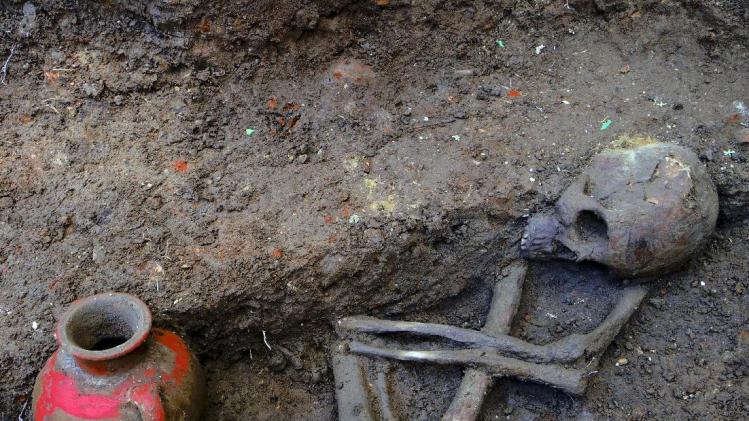
Picture provided by the Culture
Secretariat of El Salvador showing the burial site where 1600-year-old
human remains were discovered by archaeologists in the town of Nueva
Esperanza, 90 km east of San Salvador, on April 11, 2014
Japanese and Salvadoran archaeologists said Friday they
have found three human skeletons in El Salvador from more than 1,600
years ago that could shed new light on early human settlements in the
region.
The three nearly
complete human skeletons, preserved in volcanic ash, were found near the
Pacific coast at a dig called "Nueva Esperanza," about 90 kilometers
(55 miles) southeast of the capital.
The
area was buried in ash from gigantic eruptions between the 5th and 6th
centuries, which has helped preserve evidence of a the pre-Hispanic
coastal settlement, possibly dedicated to salt production and fishing.
The
new find "opens a new door for Salvadoran archaeological
investigations, which had (previously) focused only on ceremonial
centers," project director Akira Ichikawa told AFP.
He
expects more finds at the site, saying the two-meter (seven-foot) layer
of volcanic ash hides an "archaeological wealth of evidence about the
daily life and livelihood of these ancient coastal residents."
The
three bodies are those of two adults, aged between 25 and 35 years old,
and a child, between seven and nine years old, with two clay beads
around the neck, archaeologist Oscar Camacho said, based on preliminary
analysis.
They had been
buried, two of them in a cross-legged position, along with offerings
including clay pots and jars bearing dark brown and red stripes.
The remains are being cleaned for study by the Archeology Department at the National Museum of Anthropology in San Salvador.
A
tooth and a portion of the ribs will be used for chemical analysis
aimed at determining their sex, specific ages, as well as details of
lifestyle, diet and illnesses suffered.

No comments:
Post a Comment